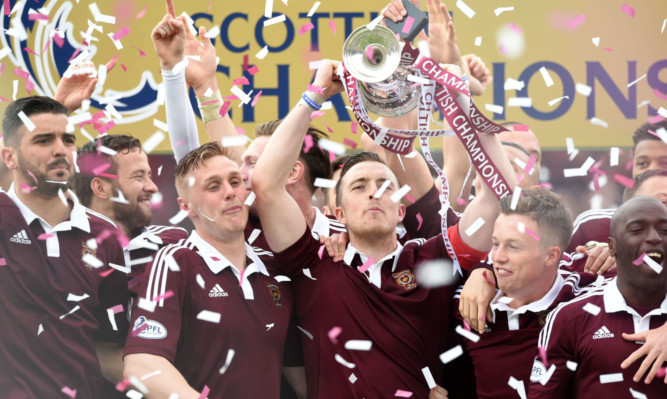
Scottish football could be set for its most radical shake up ever.
Discussions are ongoing between the SPFL and SFA, aimed at league reconstruction in time for the start of the 2016-17 campaign.
And, it is understood, serious consideration is being given to revolutionary proposals that would see two leagues of 12 split into three of eight after each team had played each other twice.
It is a system which used to operate in Switzerland and Austria, and has long been championed by SFA’s former Chief Executive Gordon Smith, who played in both countries.
At its heart is a mini play-off league Premiership 2 in which clubs fight it out to be one of four who claim a place in the following year’s top flight of 12.
The four losers start the next season in the second tier.
Such a set-up this year would have pitted Championship front-runners Rangers, Hearts, Hibs and Queen of the South against Premiership quartet St Mirren, Motherwell, Ross County and Partick Thistle in a League of Death.
As an extension of the plan, Smith would like to see clubs retain the points they collected in the first half of the season against the clubs who would be their opposition in the second half of the campaign.
Had the system been in place this season, Rangers would have started bottom of the eight, having gathered just three points in their first two meetings against their fellow Championship sides.
That would have left them a whopping 15 points behind the Jambos, who would have started the second half of the campaign ahead of the clubs who had dropped down from the top flight.
Advocates argue the 14-game campaign each team would again play each other home and away would hold huge appeal for broadcasters and sponsors alike.
Also that the format would be fairer than the play-offs currently raging just now because it would ensure the best teams over a longer period would win out.
A similar proposal was considered by the SPL and SFL two years ago but failed to gain sufficient support. That led to the birth of the SPFL in June, 2013.
Under an agreement struck then, no change can be made to the existing structure until next summer without the unanimous backing of the 42 clubs. That, it is generally accepted, is not going to happen this summer.
The ongoing discussions are therefore with a view to getting a new set up in place in time for the start of the following season, 2016-17.
The 12-12-18 is not the only proposal that will be put on the table.
Among other alternatives are ones which would see the current 12-team top tier either reduced to 10, or expanded to 16.
But with the country desperate to find a radical alternative that can capture the attention of fans and television companies alike, it is seen as having a live chance of success.
The SPFL have already shown their willingness for innovation, with big changes planned for the League Cup in 2016-17.
Early ties are set to be played in July, with the Final in October or November.

Enjoy the convenience of having The Sunday Post delivered as a digital ePaper straight to your smartphone, tablet or computer.
Subscribe for only £5.49 a month and enjoy all the benefits of the printed paper as a digital replica.
Subscribe